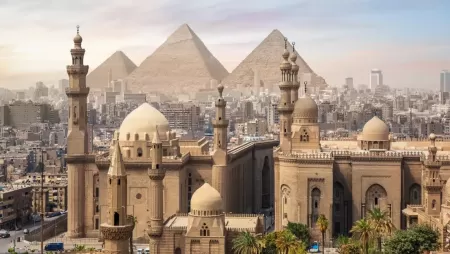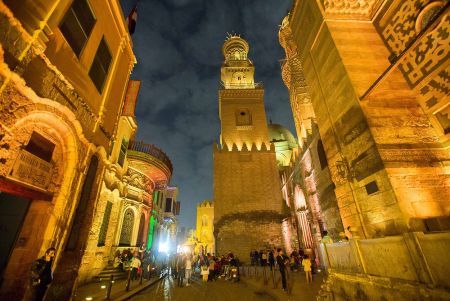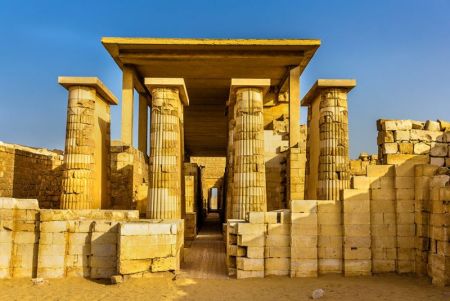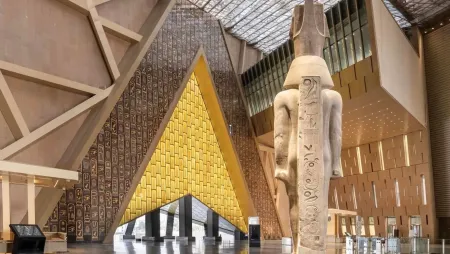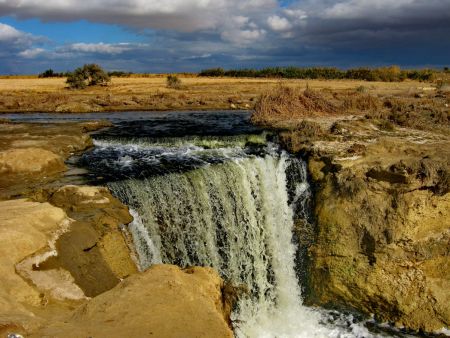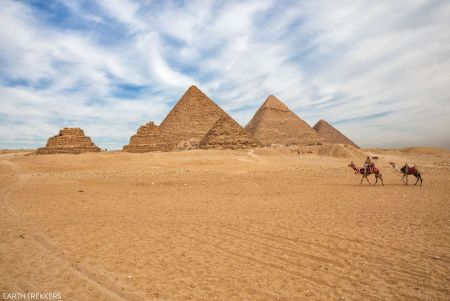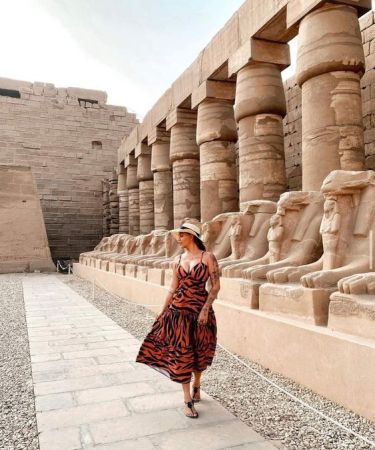Explore the charm of El Moez Street Cairo on an unforgettable Islamic Cairo walking tour. Discover ancient mosques, vibrant bazaars, and rich Egyptian heritage.
Last of Wonders—this is how the Giza Pyramids rose to have coined themselves among the most spectacular natural and manmade wonders of the world. The proof of the human form of this structure, yet unanswered mystery on how, why, and when it comes to constructing it, remains in this writing as a journey towards unraveling the secrets. An Egypt tour to see the Giza Pyramids offers the best opportunity to observe these structures in person and step into a history of awe and inspiration. With every visit, the ancient mysteries propel more exploration and learning, making the Giza Pyramids a must on any path through Egypt's rich cultural heritage.
Why did the Pharaohs build the Giza Pyramids?
The Giza Pyramids have been a subject of fascination for historians and archaeologists for many centuries, and a number of hypotheses have amassed trying to explain their purposes. Most of the mainstream beliefs hold that the pyramids were probably meant as tombs for the pharaohs and their wives after death.
The Egyptian pyramids are masterfully crafted with incredible architectural precision to show the unmatched prowess of ancient Egyptian builders. Each limestone block weighing tons gives the sheer grandeur of these monuments a challenge to modern understanding of modern construction techniques.
One common theory believes that the pyramids stood for the godly authority and eternal legacy of the Pharaohs, that is, as he was believed to be immortal, the pharaoh constructed these enormous holdings to eternalize his reign.
Some scholars have suggested that the alignment of the pyramids with celestial events, such as the alignment of the Great Pyramid with the North Pole star, points to the ancient Egyptians' great interest in astronomy, meaning that astronomical knowledge played a great role in building architectural wonders.
However, of all the theories, no one has actually come across the real intent behind the construction of the Great Pyramids of Giza. Yet, their interest continues to enthrall the whole world in testimony of the wondrous deeds of ancient peoples and the world's memory of human genius through all times. Take a step through the centuries in Best day trips from Cairo to Giza pyramids

When Did Pharaohs Build Pyramids?
These pyramids were built as final resting places during the Old Kingdom period for the pharaohs and their queens, culminating preparations for their transfiguration into divine status in the next realm. Of the 80-odd ancient Egyptian pyramids that stand today, the most important are the ones seen at Giza, including Khufu, Khafre, and Menkaure. The monumental constructions entailed about six million tons of stone and were created around 4,500 years ago, even now standing the test of time.
Most of the Egyptian pyramids served the dual purpose within the Old and Middle Kingdoms as tombs for the pharaohs and their wives, but another theory has been propounded whereby they were seen as a type of "resurrection machine" so that the dead pharaoh was enabled to go to the realm of the gods with the greatest ease. They also wanted to secure the features of the dead pharaohs for the roughness of time ahead. Eternity is what they were intended to represent.
If you're planning to visit, Best day trips from Cairo to Giza pyramids offer an unforgettable experience, allowing you to explore the history and grandeur of these iconic structures in a single day, just a short distance from the heart of Cairo.
Some features of Egypt's pyramids
According to legend, the architectural form of a pyramid symbolizes the almost vertical rays of the sun's descent. Many such pyramids are so adorned with polished, reflective white limestone that they seem to glitter from afar. Believing in the continuation of life after death, ancient Egyptians practiced mummification so that the pharaoh's corporeal body would stay preserved for afterlife practice. Besides burial with their jewels and funerary statues, they journey with their pharaohs toward eternity.
Did you ever wonder exactly how many pyramids in Egypt still stand as testaments to the whole grandeur that was ancient Egypt? The Giza Pyramids are rightly famous, but plenty of the lesser-known gems - like the Stepped Pyramid of Djoser, the Maidum Pyramid, the Bent Pyramid, and the Red Pyramid—hold their very special place in time. Unlock the secrets of the Pharaohs on Best day trips from Cairo to Giza pyramids

How were the pyramids of Giza built?
The Great Pyramid of Giza, named as one of the wonders of the world, has been a subject of much interest from scholars for many ages. But how were these great feats of engineering constructed? Let's travel behind the elucidation of events and the preparation methods, tools, and labor in their making.
1. Planning and Design:
Before laying the first massive stone, construction began with careful planning and designing. Each of the pyramids' dimensions-measures and orientations—was accurately made by the ancient Egyptian architects in correspondence to celestial phenomena. Simple instruments-rope and stake-were utilized to demark a precise foundation and shape on the desert plateau.
2. Quarrying and Transporting Stones:
The extraction and transportation of enormous stone blocks accounted for some of the most marvelous achievements of pyramid construction. Of all the building materials, saliently, limestone was quarried from nearby quarries. Copper chisels and, most importantly, arduous labor carried wooden sleds to remove huge blocks.
Once quarried, the stone blocks were transported to the construction site using sleds, rollers, and manpower. Recent discoveries have shown evidence that the floating method may have been applied to transport the blocks on barges along the Nile River to their final destination in Giza by using water channels.
3. Constructing the Core Structure:
Construction crews used a technique termed "ramp construction" to erect the core structure of pyramids. They constructed the pyramid layer after layer using inclined ramps to haul the stone blocks to higher levels, as the precise placement of blocks by skilled masons ensured fitting to the characteristic sloping surfaces.
4. Finishing Touches:
Last stage involves placing the covering stones and finishing up the internal chambers and passageways. The outer casing stones, carved precisely out of polished limestone or granite, were fitted carefully to make a smooth, gleaming surface. Internal passages and chambers reflected the very complex ancient Egyptian religious beliefs and cultural practices in hieroglyphic inscriptions and carvings.
The Giza Pyramids stand as enduring marvels of ancient engineering and culture, continuing to captivate and mystify people around the globe. From their awe-inspiring size and precision construction to the enduring questions surrounding their purpose, these monumental structures serve as a testament to the ingenuity and ambition of ancient civilizations. As we marvel at their grandeur and contemplate the mysteries they hold, let us not only admire their physical beauty but also reflect on the profound legacy they represent. The journey to unravel the secrets of the Giza Pyramids is ongoing, inviting us to delve deeper into the rich tapestry of human history. For those eager to experience these wonders up close, Best day trips from Cairo to Giza Pyramids offer an ideal opportunity to explore the iconic site. Whether you're an avid historian or simply intrigued by ancient wonders, the allure of the Giza Pyramids beckons us all to explore, discover, and appreciate the wonders of our shared heritage. Don’t miss out on a Cairo day tour to make your exploration even more enriching!
.jpg)
